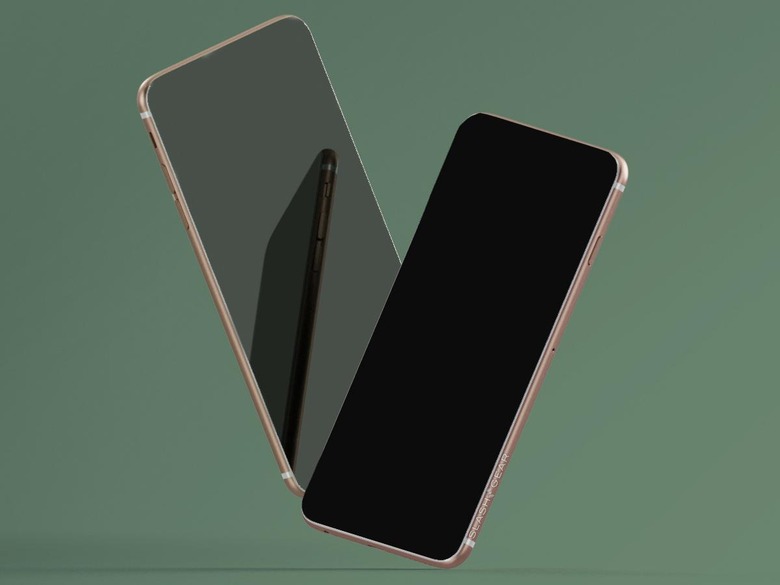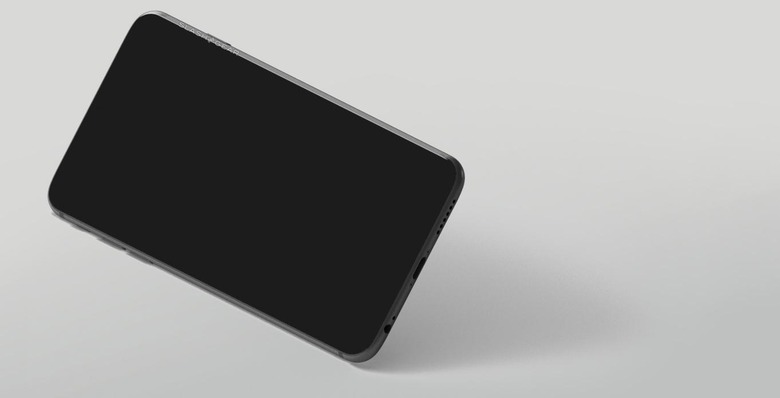I Hope This Is The Next iPhone (After The iPhone 7, That Is)
Today we have a peek at the next iPhone – a concept for a device that may be Apple's vision for the iPhone 7's next-of-kin. There's word that the iPhone 7 wont be a miracle of engineering and mind-blowing madness – that it won't be the major upgrade this 2-year cycle Apple always works with would have us expect. This is not the iPhone we were expecting, or hoping for. Instead, the big change in smartphone action, I hope, will be coming in 2017. This device will be the real brain-blaster.
The next iPhone is something I hope will change the way we use smart devices. It'll do this by changing the way the device works. Developers will be able to make use of a different sort of display technology, one that'll adapt to whatever setup each app it runs requires.

The front of this device will have a single pane of reinforced glass and a single display panel.
This display panel will have several hardware components under it that work much in the same way we see hardware components above the surface of the iPhone work now.
There'll be a speaker system for the user's ear that'll be able to transmit through the glass using one of several plausible means. There've been plenty of devices released over the past several years with technology like Bone Conduction that tosses out the need for traditional speakers – no problem.
SEE TOO: How to present an iPhone Pro
Sensors will also be embedded within the device, though hidden behind the display when they're not needed. Similar to a 2-way mirror, this display can reveal or hide components behind it with ease.
There's a home button on this device in the same place as it's been on previous iPhone releases, but now it's under the glass as well. There's a Touch ID sensor under there as well.
This iPhone's display spans the majority of the front of the device. It reaches the edges of the glass (with a reasonable amount of border left, just as the iPhone 6s has now), making optimum use of the front of the phone.

This would not have been possible with the design sensibilities of the year 2007, but here in 2017 (when this device is revealed), we're far more willing to adapt to new features in favor of having what's new – we're more willing to try things out.
When the first iPhone was released in 2007, it was generally believed that people would use smartphones with one hand, and that the optimum size would be that which would allow one-handed use at all times.
TAP IN: iPhone 7's big change isn't what you're expecting
When the iPhone 6 and iPhone 6 Plus were revealed and sold like hotcakes, it was confirmed that everyone – even Apple users – no longer cared about one-handed palm-friendly smartphone use.
This new device will prove that again.
I hope.
I can't help but hope that Apple will reveal something that'll shake up their userbase just enough to inspire the entire smartphone industry. Features that'll allow an iPhone user to work with a familiar UI, but can expand beyond what was possible back in 2007.
A display that spans the entirety of the front of the smartphone should be just the start.
Next, I'll want it to be spatially aware.
At the head of this article you'll see an image initially illustrated by Marek Weidlich and modified by SlashGear (removing the earpiece).
Each of the other illustrations you see here come from LSTORE.
